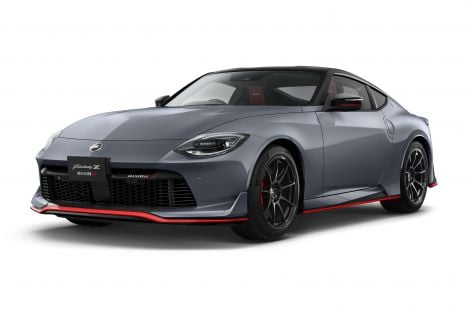

Derek Fung
Nissan Z Nismo manual revealed, facelift timing confirmed
3 Days Ago
Where expert car reviews meet expert car buying – CarExpert gives you trusted advice, personalised service and real savings on your next new car.
So far as iconic Japanese sports cars go, the Nissan Z series is among the very best with a deep history – and a fan base that has waited patiently for the arrival of the seventh-generation model.
It’s been 13 years since the 370Z launched, and 59 years since the very first “Z” car (S30) went on sale.
The major changes to the new Nissan Z are the return to a turbocharged six-cylinder engine, and an entirely fresh ‘retro-modern’ design that shares more in common with the 300ZX than the 370Z and 350Z that came before it.
Having dropped the numerical part of the model name and with no Fairlady badging for Australia, the Japanese giant is sticking with the Z brand, with no mention of its new 3.0-litre engine capacity in the name.
We joined Nissan legend and the modern father of the GT-R and now Z, Hiroshi Tamura, for the Australian launch of the new sports car.
The project started all the way back in March 2017, with a hand-written note by Mr Tamura to convince the management the 370Z needed to be replaced.
The note, written in Japanese, set out to explain why the 370Z was no longer selling as well as the company hoped, and set some targets for what the next-generation model should be. By Mr Tamura’s own admission, updating the Z was probably not high on Nissan’s agenda at the time given its financial struggles in 2017.
According to the note, the 370Z’s poor sales were down to its exterior design, performance, and the lack of updates. The targets were set for the new model to have an all-new exterior, a partial interior update, and around 400hp (298kW), which could only be delivered with a twin-turbo engine.
The only way the Z project was given the green light was through utilisation of an existing platform and parts.

The 2023 Nissan Z Coupe is basically a heavily revised Nissan 370Z in terms of platform and architecture, but gains Infiniti’s 3.0-litre twin-turbo V6. The six-speed manual transmission is borrowed from the 370Z, while the nine-speed automatic comes from Nissan’s other cars.
There is, in essence, nothing all-new in the new Z, but that’s also how the price has been kept low, and why the Z feels very much as you would expect a Z to feel – rear-biased, playful, and inherently flawed.
There are currently about 1200 orders for the new Nissan Z in Australia, of which about 70 per cent are manual. For that reason we are sticking with the majority of our assessment based on the manual car, but will also discuss the automatic briefly.
Shortly, we will put the automatic and manual Nissan Z on track to find out how they compare.

The new Nissan Z is priced from $73,300 plus on-road costs for the standard coupe and $80,700 for the limited-edition Proto specification – which looks very much like the original concept.
The Z Proto features unique bits such as Ikazuchi Yellow paint with a black roof, matching yellow brake calipers, 19-inch bronze forged alloy wheels, and interior trim tweaks. A black roof and red interior can also be optioned on the standard Nissan Z.
The new Nissan Z’s price point compares to the $61,990 (manual) and $64,490 (auto) stickers for the 2021 Nissan 370Z Nismo.
In terms of competitors, the top-selling Ford Mustang Fastback GT V8 is priced between $65,290 and $68,290 depending on transmission; a BMW 230i Coupe sells for $70,900, and of course there’s the Toyota Supra, which currently starts at $87,303 and will soon get a manual option.
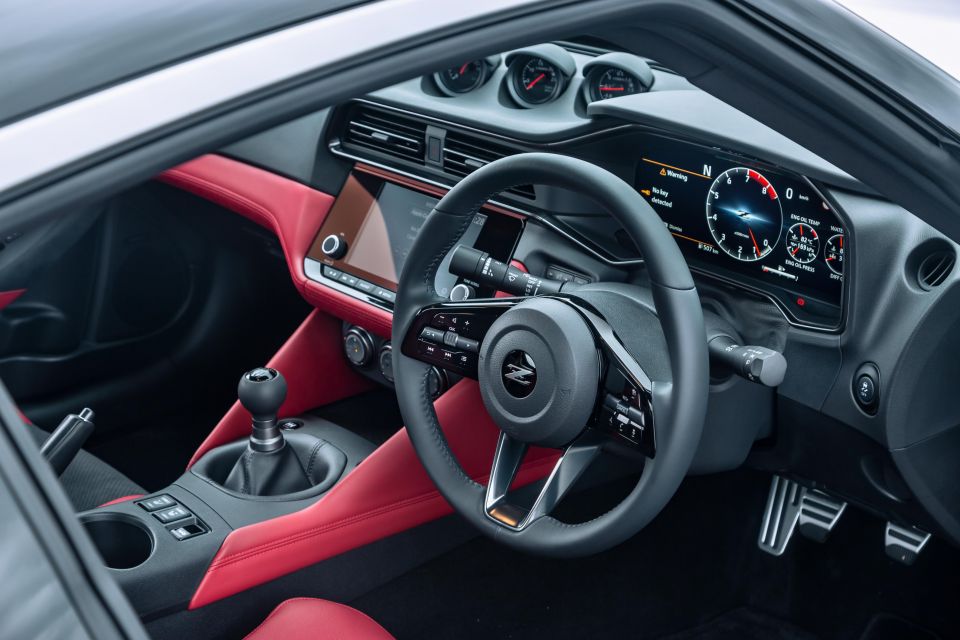
Buy your new car without the stress. It's fast, simple and completely free.

Great service from Travis and team, second time I have used this business would not hesitate to recommend them to anyone
Craig C.
Purchased a Ford Ranger in Sunshine Coast, QLD
CarExpert helped Craig save thousands on his Ford Ranger, now let us save you on your next new car.
Find a dealIt’s hard to hide the links to the 370Z when you jump inside the new Z.
The steering wheel is still a little on the large side, the seating position is nearly identical to the 370Z (which means it’s not ideal if you’re vertically gifted), and the lack of cabin space and practicality is all carried over.
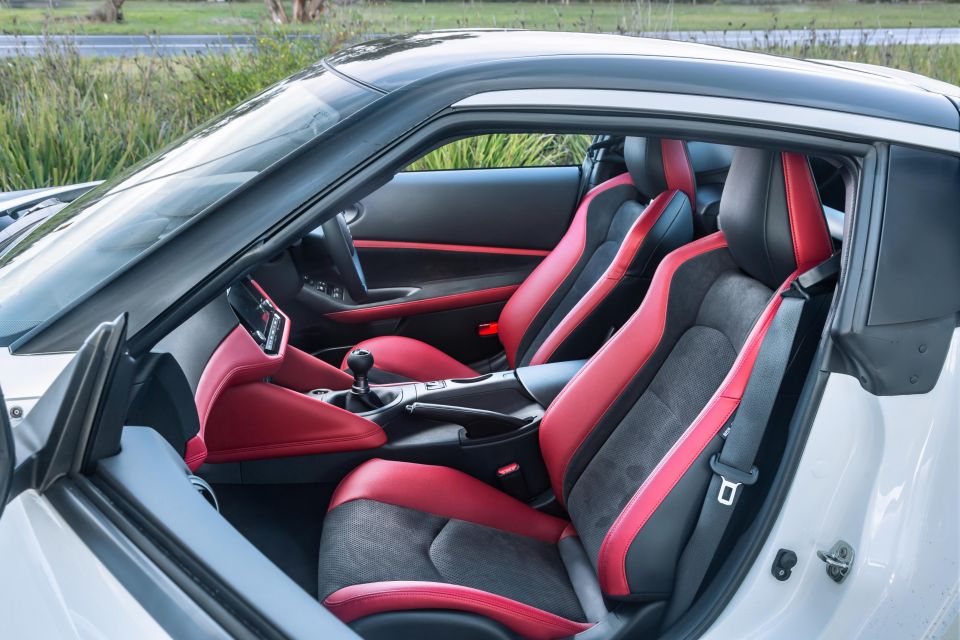
None of that should really matter to a true enthusiast because the Z has never been about creature comforts and luxury – it’s always been an honest Japanese sports car that’s about thrilling the driver rather than an A-to-B commuter.
In saying that, all Z models come standard with a leather-accented interior, a fully-customisable 12.3-inch TFT digital instrument cluster, and an 8.0-inch infotainment screen with Android Auto and Apple CarPlay integration.
Annoyingly the screen mirroring technology is not wireless.
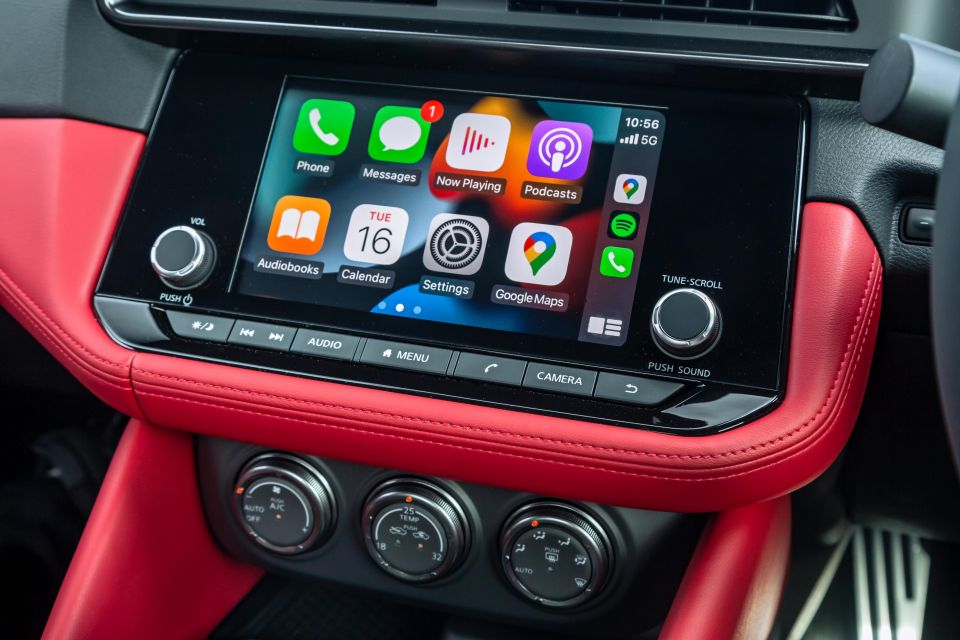
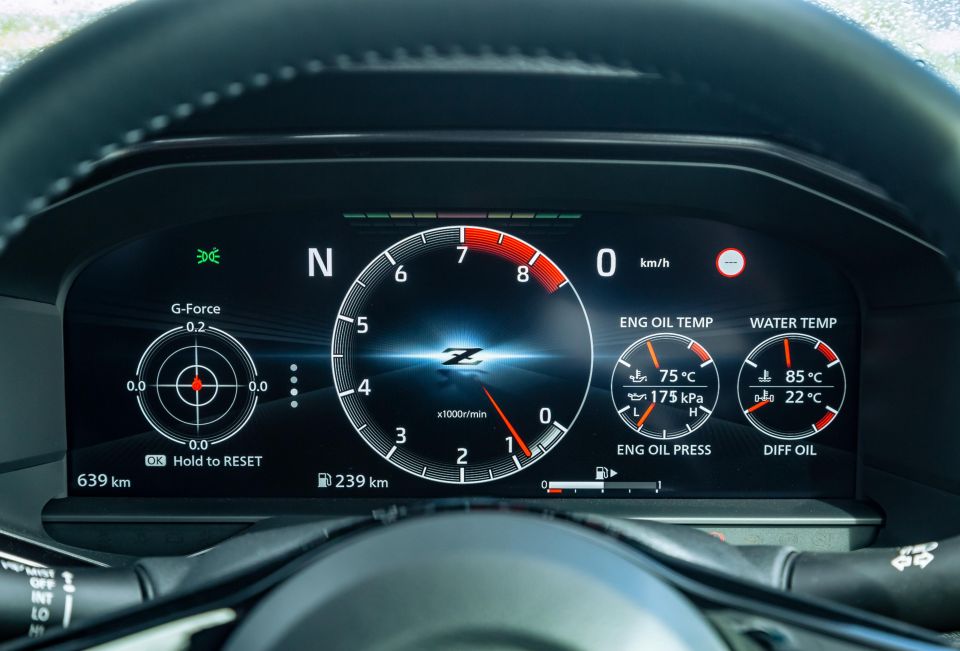
Even more annoyingly, despite having a USB-C port, the Nissan Z will only support Apple CarPlay using the standard USB port, which means you have the choice of fast charging your phone or using CarPlay.
The Z also misses out on standard satellite navigation (not that you need it with CarPlay), and we were disappointed to learn we miss out on the North American market’s larger 9.0-inch infotainment system that does in fact have wireless CarPlay and built-in navigation.
The 12.3-inch instrument cluster is, however, super clear and easy to read. Nissan says it was designed by one of its race drivers and during out test we found it easy to read for both speed and other performance data.
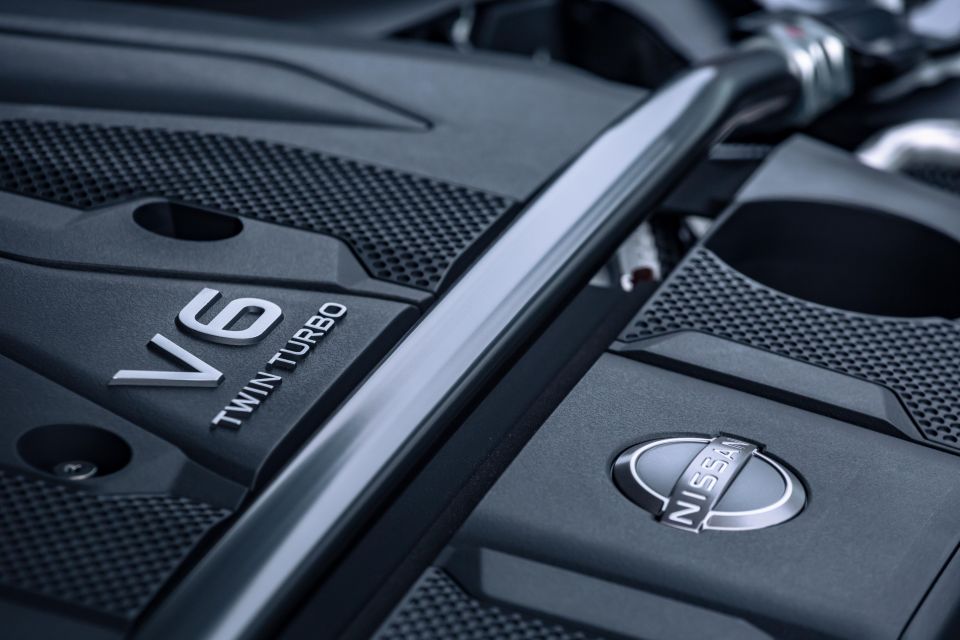
The 2023 Nissan Z is powered by Infiniti’s 3.0-litre twin-turbo DOHC V6 (VR30DDTT). It’s a fuel-injected, four-valve-per-cylinder alloy engine which produces 298kW (up 22 per cent on 370Z), and 475Nm of torque (up 112Nm on 370Z).
The manual weighs 1600kg (kerb) while the automatic carries a 33kg weight penalty. Put all of those figures together and it adds up to a power-to-weight improvement of around 13 per cent over the Nissan 370Z.
While the nine-speed automatic is borrowed from Nissan vehicles like the Frontier and Pathfinder, the six-speed manual comes from the 370Z but is now equipped with a high-performance clutch supplied by Japanese racing specialist Exedy, and is linked to the rear wheels with a carbon-fibre composite driveshaft.
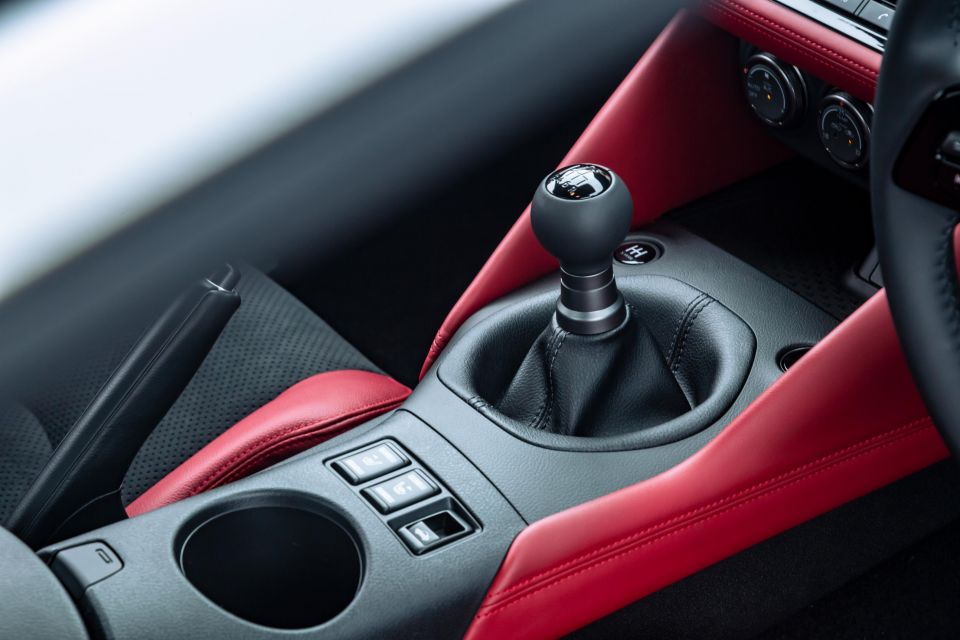
Rev-matching is available with a press of a button on the centre console, while automatic models feature aluminium paddle shifters and two different drive modes: Standard and Sport.
In Sport, the automatic Z slightly modifies its steering profile while also gaining active sound enhancement (via the speakers), and the traction control gives the driver a little more leeway to play with. In manual cars, the traction control is either on or off.
Nissan claims fuel economy (98 RON only) of 10.8L/100km for the manual and 9.8L/100km for the automatic. Both have a 62L fuel tank.

The Nissan Z feels like an entirely different car to the 370Z in a straight line.
Although for whatever reason Nissan does not provide official 0-100km/h times, our tests had it consistently managing around 4.7 seconds to 100km/h in the manual – and we were not being harsh on the clutch, which would suggest a mid-four-second time is possible.
The quoted 475Nm of torque is a bit deceptive, as the Z feels like it has far more go on the move than that figure would suggest.
The nine-automatic transmission is just as capable of getting the best out of the engine as the manual, if not a little more given the extra three gears allow for the turbos to be at their peak delivery more frequently (peak torque at 5600rpm), but the rev-matching and smooth-shifting six-speed manual is hard to look past.
Nissan says during hard acceleration manual drivers can now shift without having to lift off the accelerator, which is a pretty decent way to shave some time, but the closer you get to redline the more cumbersome the system felt, so it’s not something we would do frequently if it was our own car.
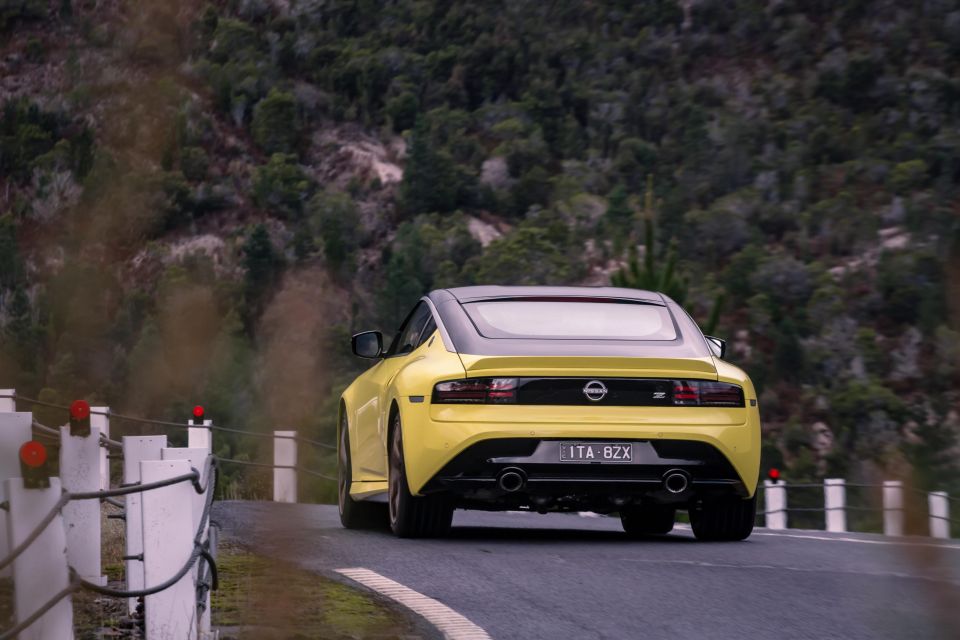
The gear ratios for the Nissan Z manual are as follows:
| Gear | Manual | Automatic |
|---|---|---|
| 1 | 3.794 | 5.425 |
| 2 | 2.324 | 3.263 |
| 3 | 1.624 | 2.249 |
| 4 | 1.271 | 1.649 |
| 5 | 1 | 1.221 |
| 6 | 0.794 | 1 |
| 7 | 0.862 | |
| 8 | 0.713 | |
| 9 | 0.597 |
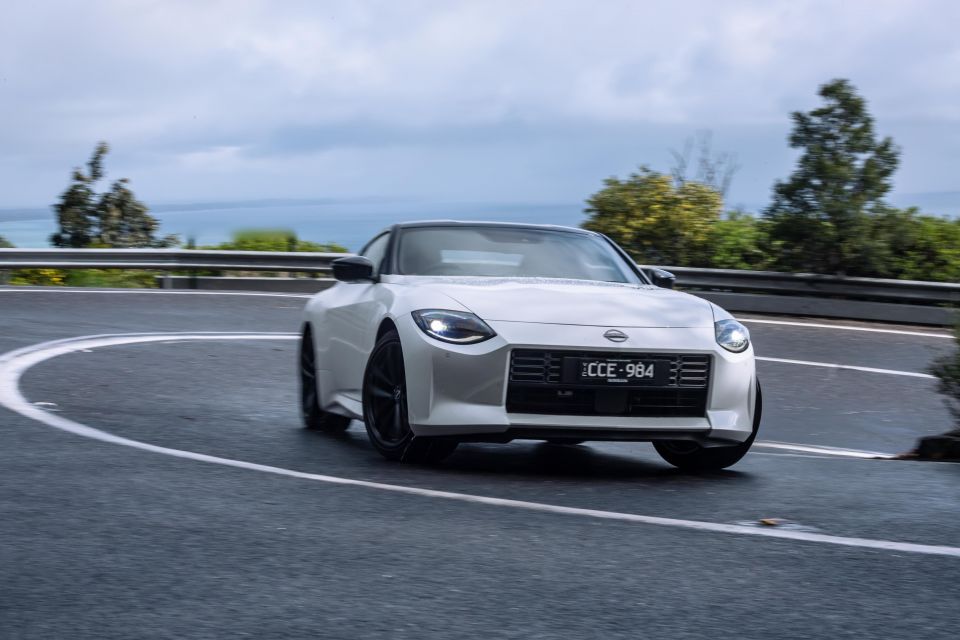
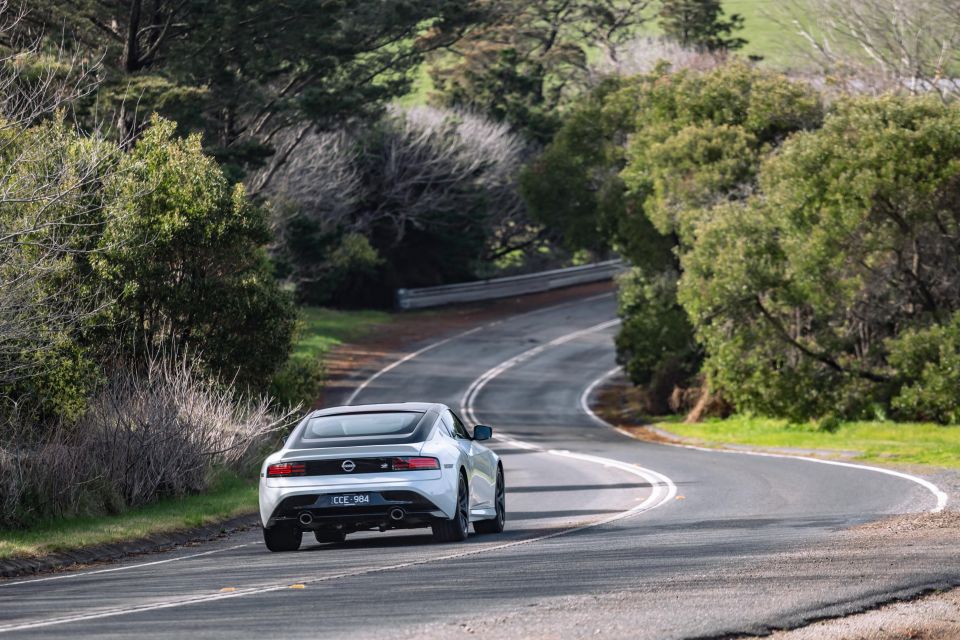

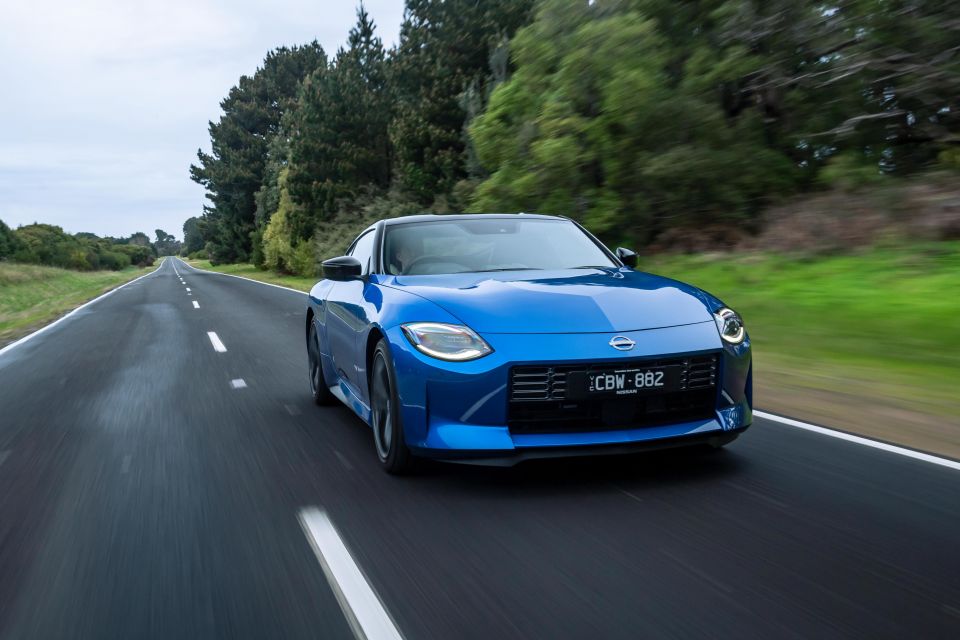
If none of that makes much sense to you, just think of gear ratios as the ratio of the angular speed of the input gear to the angular speed of the output gear. Basically, the higher the gear ratio, the quicker the revs go up to achieve its maximum gear speed and vice versa – not too dissimilar to a bicycle gear set.
As you can see, the first few gears in the automatic are different to the manual, so you will notice the Z go through gears a lot quicker in traffic or sudden acceleration.
This is not necessarily a bad thing – and given the turbocharged nature of the vehicle, it potentially makes the automatic Z a little easier to drive at peak performance.
We are not making a case for the automatic, but it’s worth considering as it’s not a poor relation to the manual and we don’t think there’s any shame in opting for the auto over the manual. I certainly enjoyed driving both, but would always pick a manual in a sports car.
The Nissan Z feels pretty loose at the rear, even with traction control turned on. It likes to play and will slide around with ease, but it’s also pretty intolerant of poor driving so if you happen to get it outside its sweet spot, it will bite.
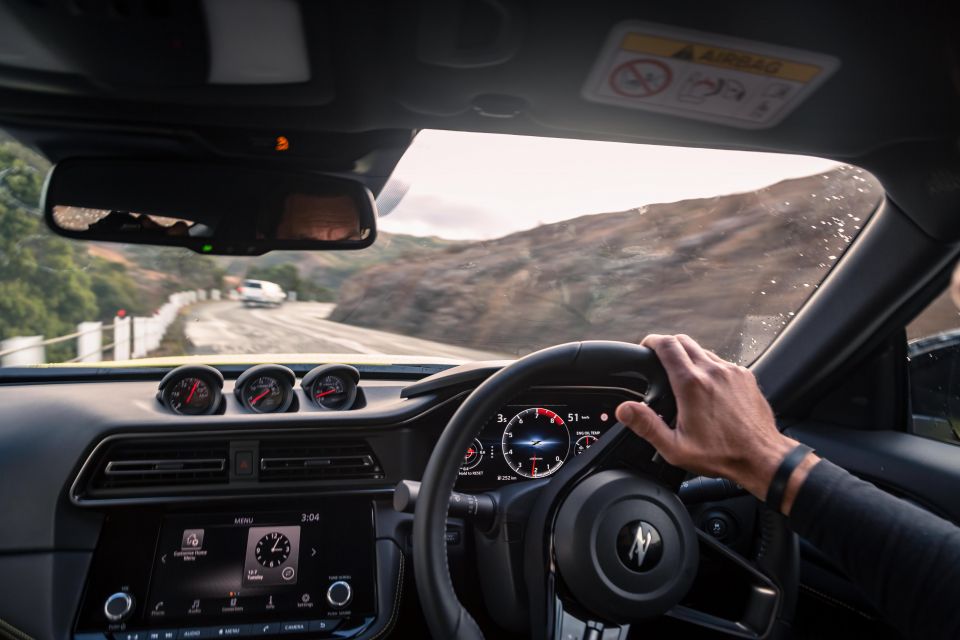
That is in no way helped by the use of a mechanical limited-slip differential, which means that if you happen to give it a bit of throttle when the car is already loaded, it will let you know about it.
We didn’t get a chance to drive it flat out on track (soon), but our spirited driving would suggest it’s an improvement in driveability and composure over the 370Z.
The fact Nissan is using a singular worldwide suspension setup means on our bumpy roads it feels softly sprung but firmly damped, and arguably is not as confidence-inspiring as the Toyota/BMW Supra.
Hit an uneven patch of road mid-corner and the Z will move about quite a lot. Do that a few times and it makes it feel nervous going up a mountainous road at speed.
The 255/40 R19 front tyres are wider than the 370Z and they feel more grippy but the 275/35/R19 rears often struggle for traction.
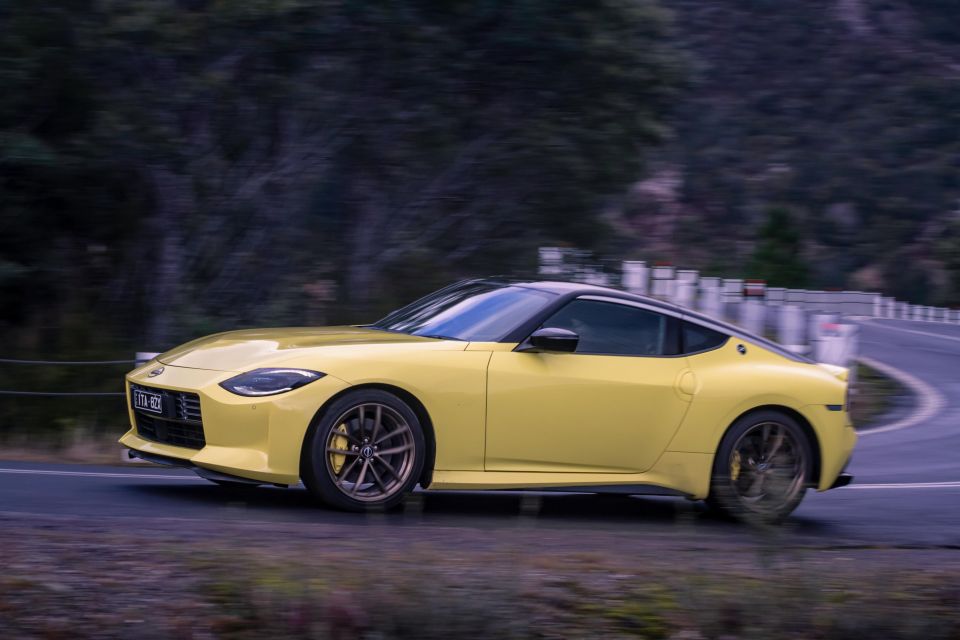
Perhaps the most disappointing aspect of driving the Z is the exhaust note. It’s just… not great. It really doesn’t sound like anything at all, it’s a mixture of engine noise and suction sounds that fail to inspire in the slightest.
Hopefully an aftermarket exhaust can give it some character, because as it stands the Supra is leagues ahead of the Z in terms of acoustic appeal.
On the plus side, we found the Z’s braking performance strong despite constant abuse. While four-piston, 355mm front and two-piston, 350mm rear brakes no doubt do an excellent job on the road, it remains to be seen how they handle a proper track day.
Overall, we definitely enjoyed our time with the new Nissan Z on the road. There are a lot of characteristics from the 370Z that are present (short wheelbase, struggles with poorly surfaced roads) if not amplified (snappy rear), but the character of the Z lives true to its core.
It’s fun. It’s enjoyable and it absolutely keeps you on your toes.
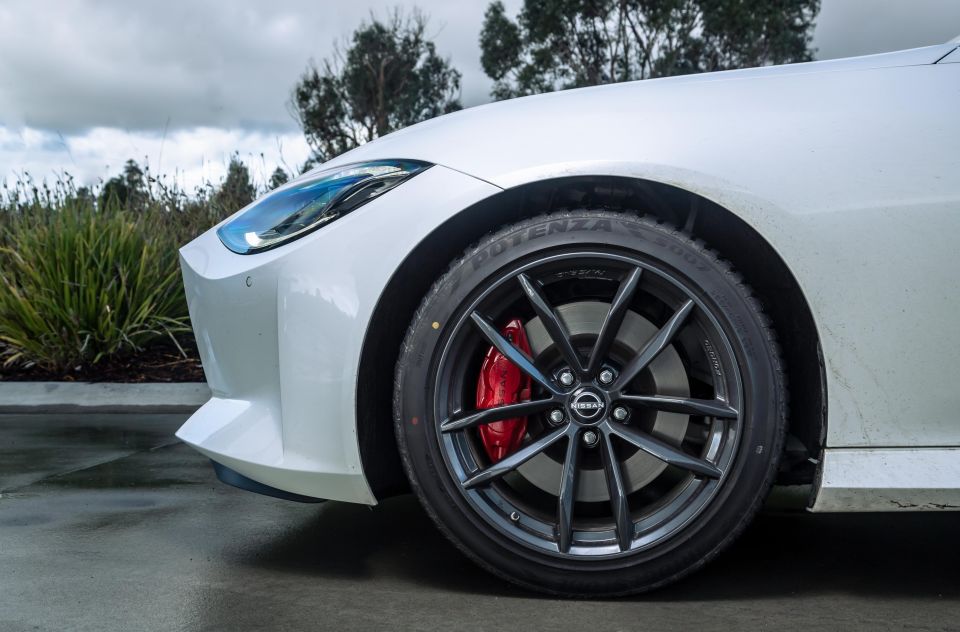
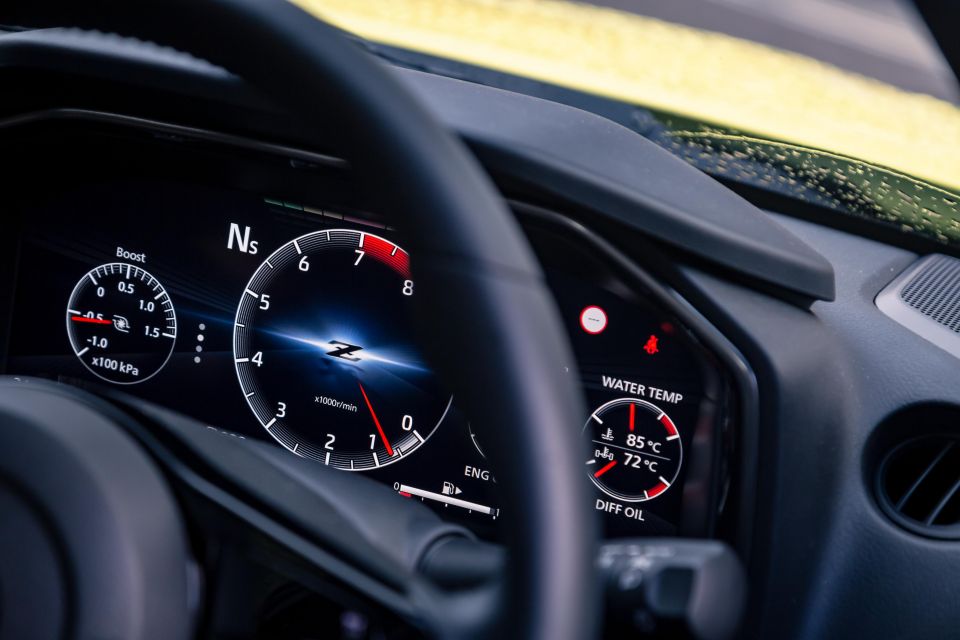
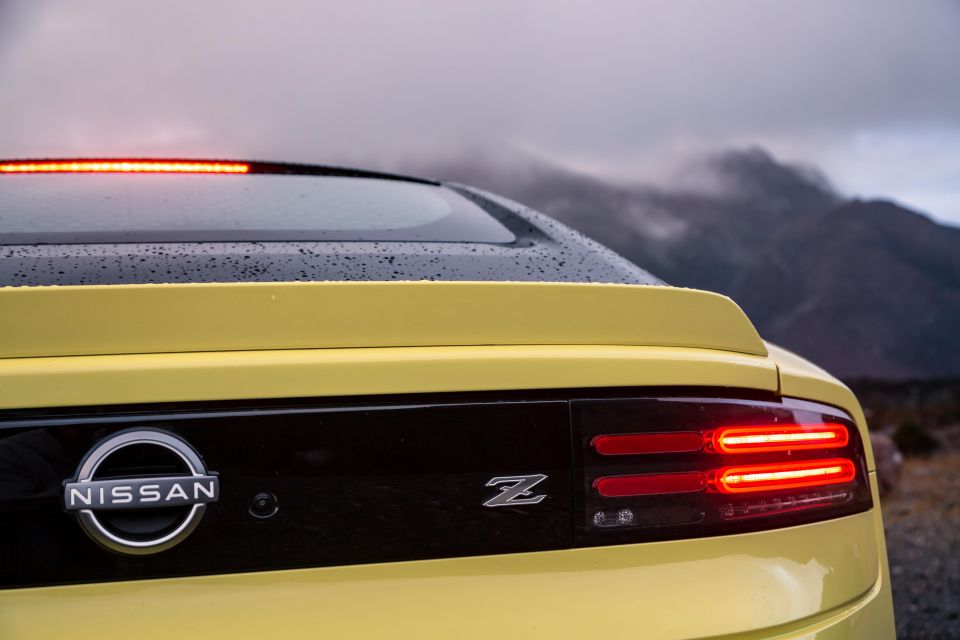
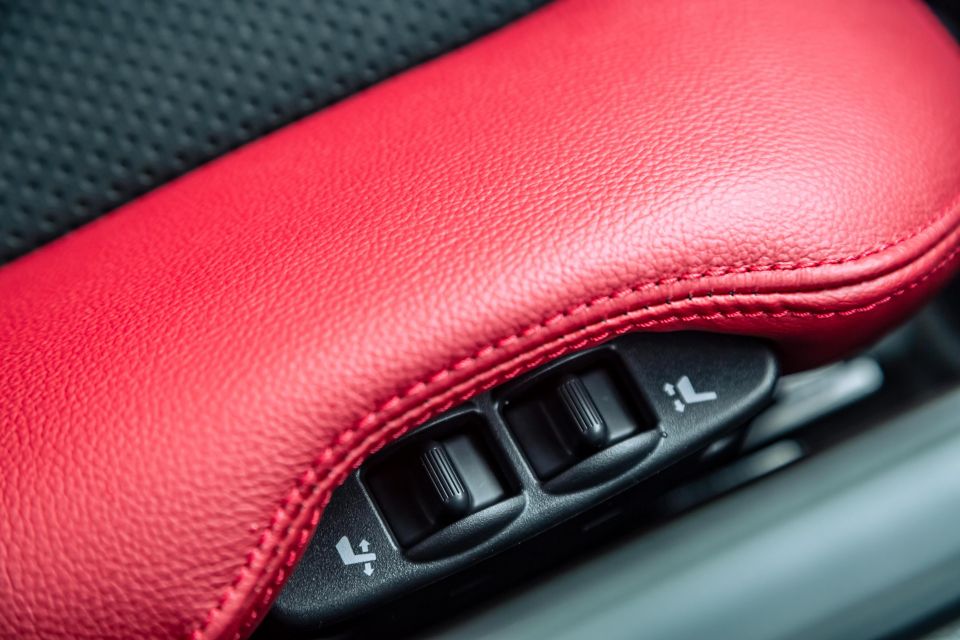
Where expert car reviews meet expert car buying – CarExpert gives you trusted advice, personalised service and real savings on your next new car.
Z Coupe highlights:
There are not many options on the Nissan Z bar the premium paint ($750) which applies to all colours but the Rosewood Metallic, the Super Black roof ($1200 incl. premium paint), and a red interior ($NCO).
No doubt Nissan will eventually do a Nismo version at some point and we hope to see some more aggressive lines and equipment level available when it appears.
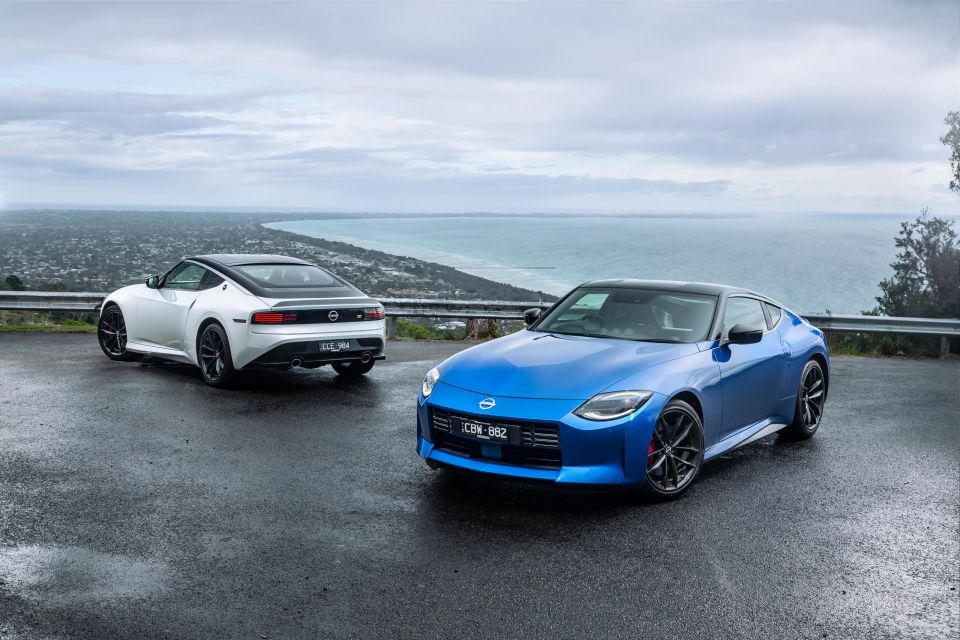
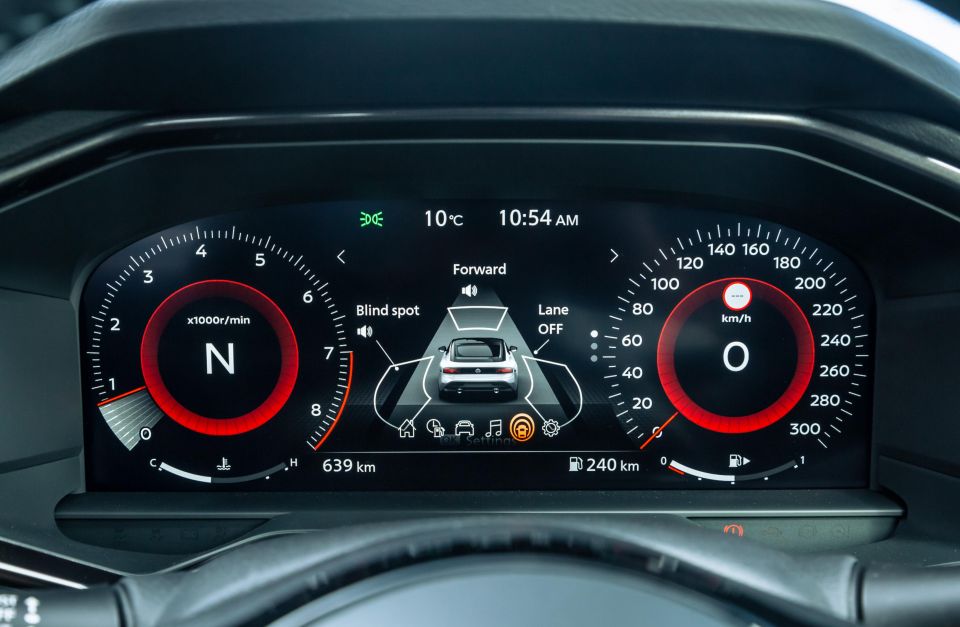
The Nissan Z has not been tested officially by Euro NCAP or ANCAP.
The 370Z was never tested officially either, so it is not possible for us to give you a safety rating score.
Standard safety features include:
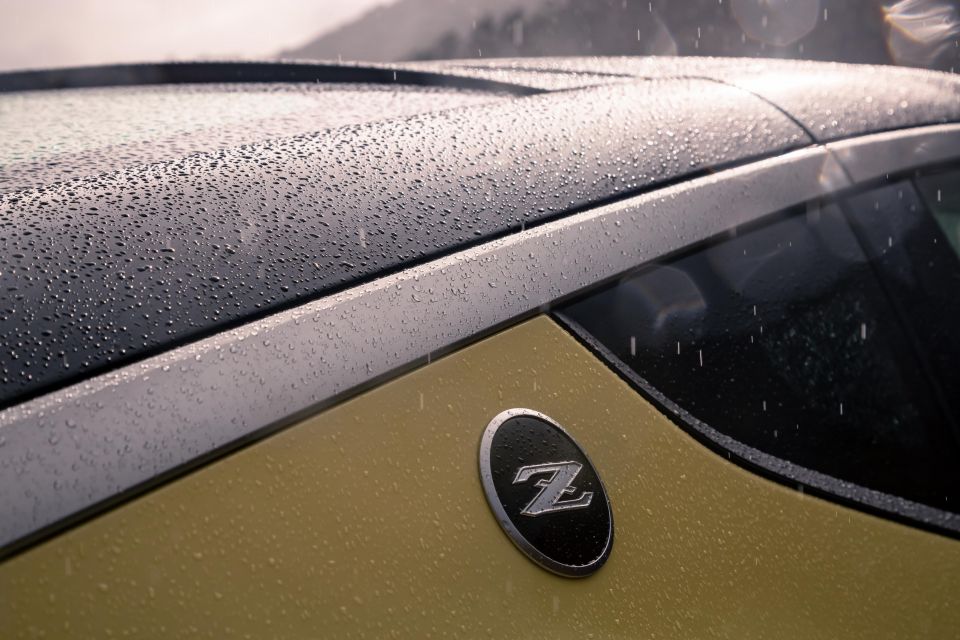
The Nissan Z is covered by a five-year. unlimited kilometre warranty.
Service costs are as follows:
Manual
| 1 service | 2 service | 3 service | 4 service | 5 service | 6 service |
|---|---|---|---|---|---|
| 10k/12m | 20k/24m | 30k/36m | 40k/48m | 50k/60m | 60k/72m |
| $340 | $467 | $456 | $718 | $368 | $616 |
Automatic
| 1 service | 2 service | 3 service | 4 service | 5 service | 6 service |
|---|---|---|---|---|---|
| 10k/12m | 20k/24m | 30k/36m | 40k/48m | 50k/60m | 60k/72m |
| $340 | $482 | $443 | $734 | $368 | $617 |
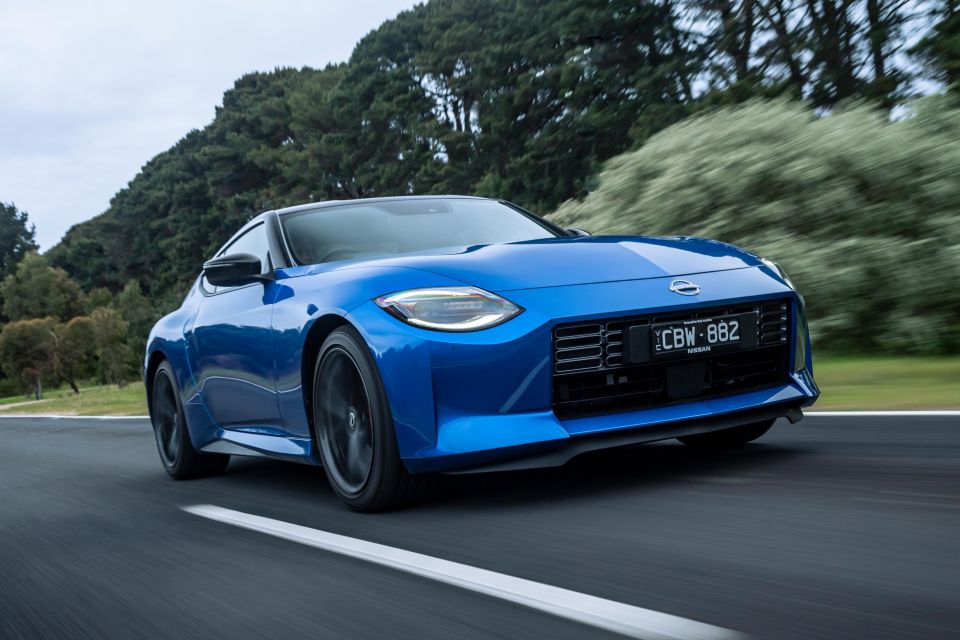
Nissan sold 5244 370Zs in Australia, up from 4990 sales of the 350Z.
The new Z is expected to have a higher overall sales number over its lifetime, with the market for sports cars in that segment set to grow from around 10,000 units a year to 14,000 or 15,000 units by 2026.
The interesting thing about the ‘affordable’ sports car, is the fact it’s having a proper comeback with the Z joining the a number of other viable options.
Ultimately, this is the Z as it should have been in the last generation. It combines a super tuner-friendly engine with modern-retro looks and a half decent interior.
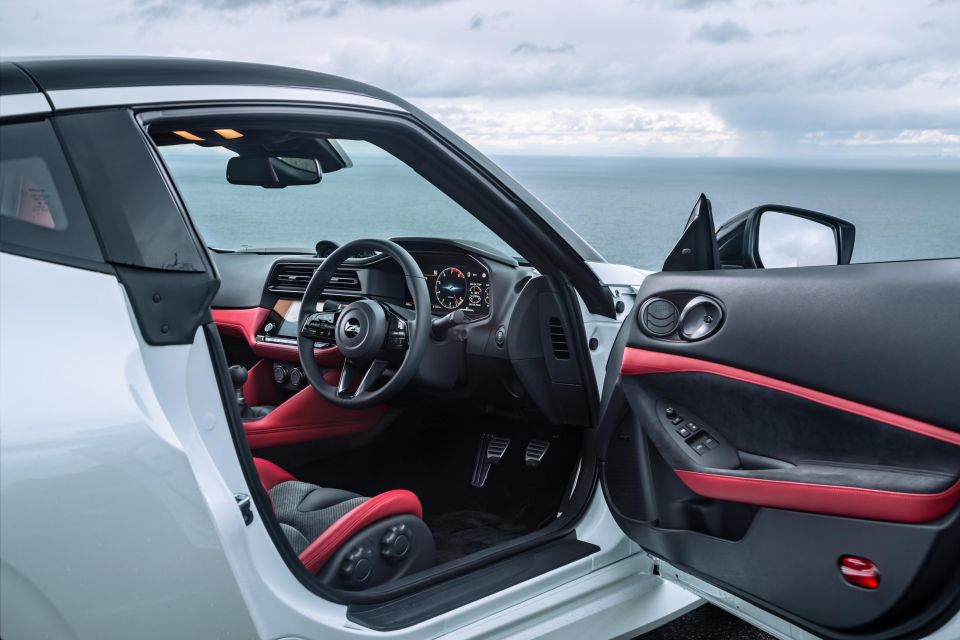
It still lacks the driving finesse of its Supra rival and if you don’t like the thought of buying a heavily-revised 370Z, look elsewhere.
However, if you’re after some no-nonsense, affordable fun in a rear-wheel drive manual sports car that will likely never give you any problems (considering all the parts have been in real-world use and tested for some time), this is the car for you.
If we had about $80,000 to spend on a Japanese sports car, it would either be the new 2023 Nissan Z or we would try and stretch an extra $10,000 to the Supra (in the soon-to-be released manual).
We can’t wait to put them side-by-side for a comparison.
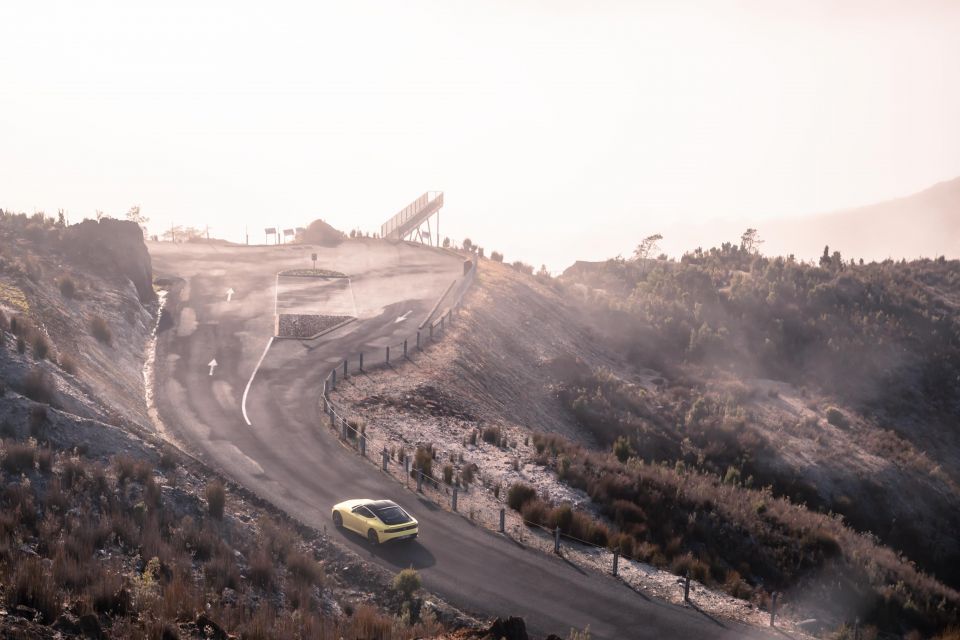
Click the images for the full gallery
MORE: Everything Nissan Z
Where expert car reviews meet expert car buying – CarExpert gives you trusted advice, personalised service and real savings on your next new car.
Alborz Fallah is a CarExpert co-founder and industry leader shaping digital automotive media with a unique mix of tech and car expertise.


Derek Fung
3 Days Ago
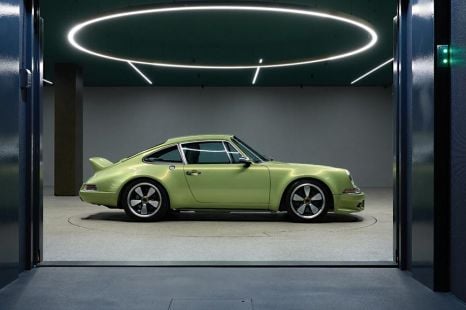

Marton Pettendy
18 Days Ago
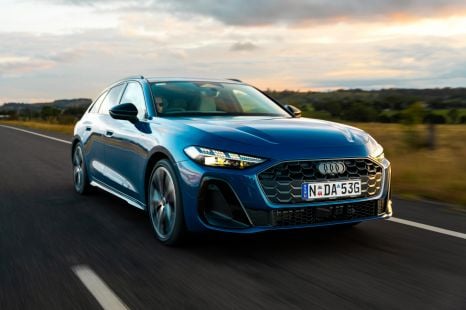

James Wong
27 Days Ago


Damion Smy
27 Days Ago
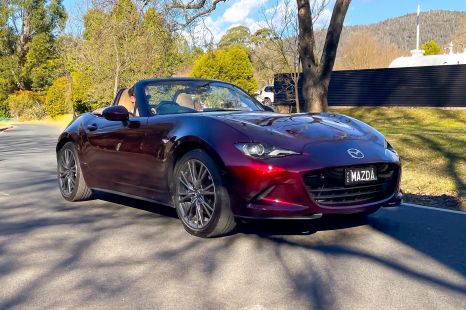

Josh Nevett
1 Month Ago
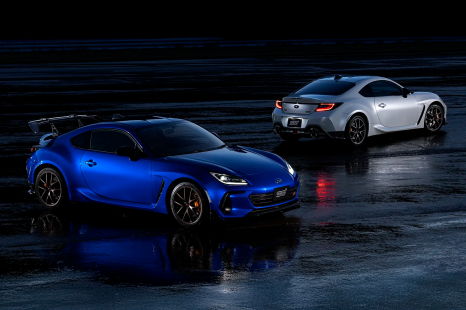

Max Davies
1 Month Ago